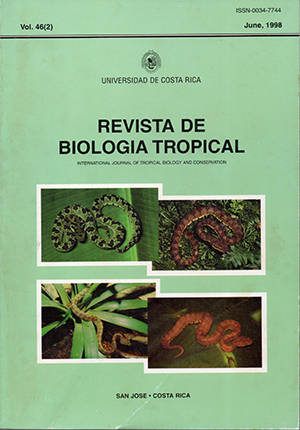Abstract
Larval development of Hemicaranx amblyrhynchus is described from wild specimens (standard length SL: 1.8-16.4 mm) caught in the southern Gulf of Mexico (N=25). A serrated occipital crest was present only in specimens smaller than 5.73 mm SL and a supraocular erest with a small spine in those between 4 and 5 mm. As in all larval carangids, the angle preopercle spine was conspicuous since tbe fírst stages. Suprac1eithral and posttemporal spines were present during flexion stage, and then disappeared in transformation stage. Body depth is moderate, increasing with development. The dorsal and anal fíns start to be evident in the 2.65 mm NL specimen; total number of spines and soft rays are almost complete around 9.0 mm SL. The pelvic bud was observed in tbe 3.16 mm LP specimens. From tbe early stages, the larvae are very pigmented and could be recognized by a pigmentation blotch on tbe tip of nose, which is conformed by palatine melanophores among others. Larvae of H. amblyrhynchus occurred scarcely in the area; they were essentially recorded on the inner shelf, in imrface waters, not deeper than 30 m. The present paper is the fírst larval record for the speeies in the southern Gulf of México.##plugins.facebook.comentarios##

This work is licensed under a Creative Commons Attribution 4.0 International License.
Copyright (c) 1998 Revista de Biología Tropical
Downloads
Download data is not yet available.






